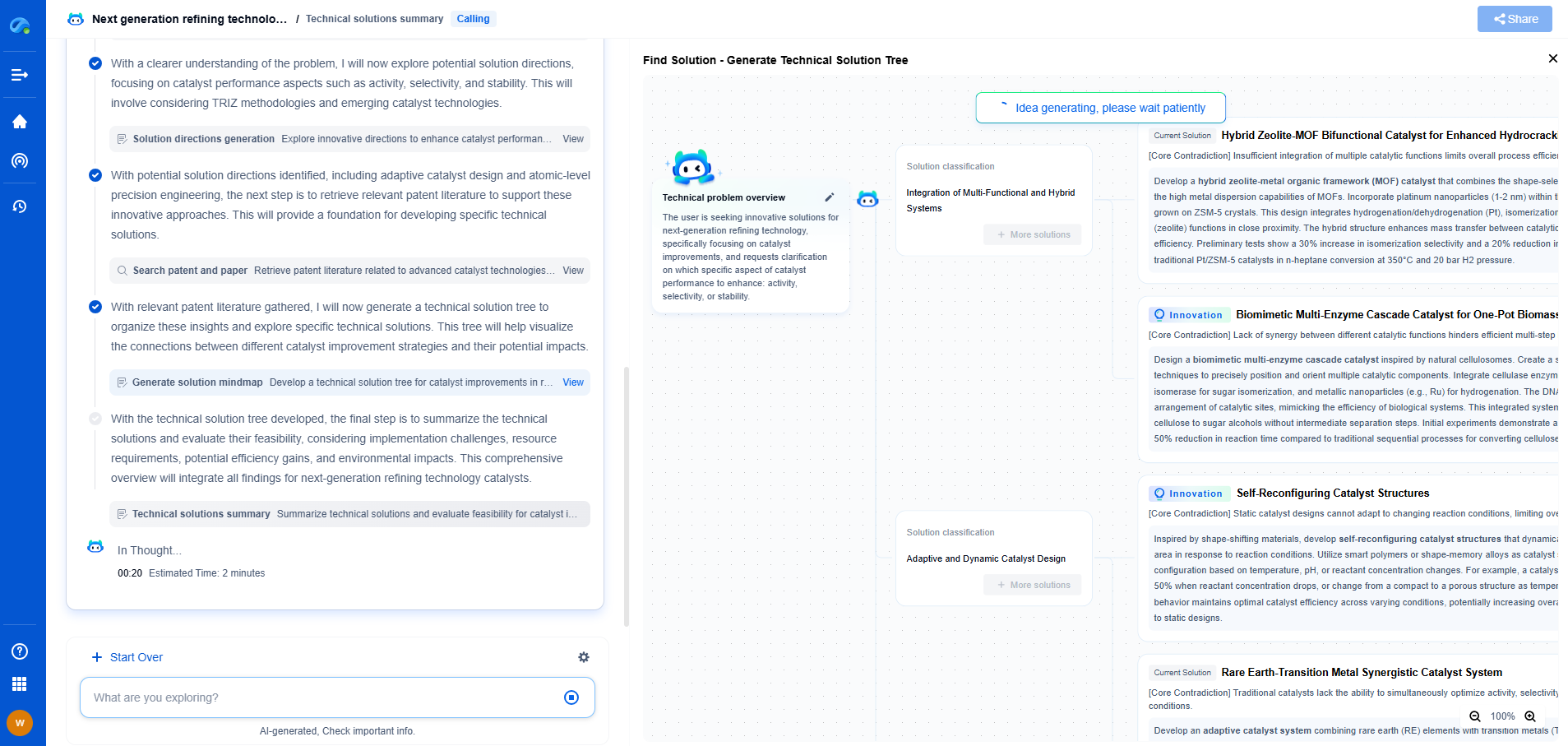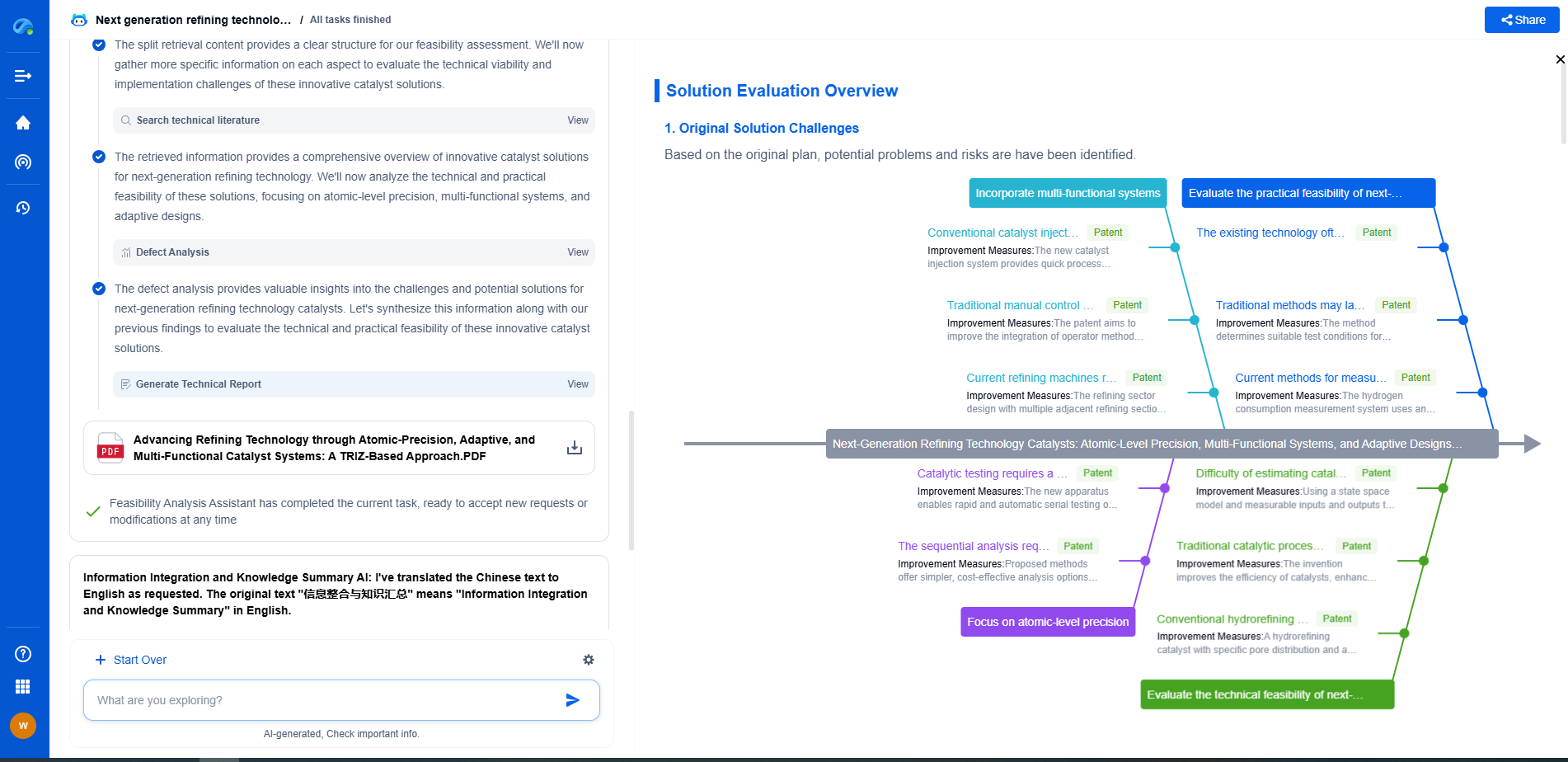Gear Tooth Failure Modes: Pitting, Spalling, and Breakage Explained
JUL 2, 2025 |
Gears are integral components in a wide array of mechanical systems, from simple machines to complex industrial equipment. These mechanical marvels transfer torque and motion, ensuring that systems operate effectively and efficiently. However, like all mechanical parts, gears are susceptible to wear and tear. Among the most common types of gear tooth failure are pitting, spalling, and breakage. Understanding these failure modes is crucial for diagnosing issues and implementing preventive measures.
Pitting: The Silent Deterioration
Pitting is a progressive form of surface fatigue characterized by the formation of small pits on the gear tooth surface. This phenomenon primarily occurs due to the cyclic stress applied to the gear teeth during operation. Over time, these stresses can cause microscopic cracks just beneath the surface. As the gear continues to function, these cracks propagate until small pieces of material break away, forming pits.
Several factors contribute to pitting, including inadequate lubrication, excessive load, poor material quality, and improper gear alignment. Despite its relatively benign appearance, pitting can lead to increased noise, vibration, and eventual tooth failure if not addressed promptly. Regular inspection and maintenance, coupled with the use of high-quality lubricants, can significantly reduce the likelihood of pitting.
Spalling: The Advanced Stage of Pitting
Spalling is essentially an advanced stage of pitting. While pitting involves the formation of small pits, spalling refers to the process where larger surface areas of the gear tooth begin to flake or peel away. This occurs when the subsurface cracks, initiated during the pitting phase, expand and coalesce, leading to the detachment of larger fragments of the material.
Spalling can severely compromise the gear's performance, leading to increased noise, loss of efficiency, and even catastrophic failure if left unchecked. It is often a sign of severe fatigue and indicates that the gear is nearing the end of its service life. Addressing spalling requires a comprehensive approach, including proper material selection, maintaining optimal operating conditions, and ensuring precise alignment of the gear system.
Breakage: The Catastrophic End
Breakage represents the most severe form of gear tooth failure, where the tooth fractures or breaks entirely. This failure mode typically results from excessive loads, impact forces, sudden overloads, or pre-existing material flaws that weaken the gear tooth. Unlike pitting or spalling, which develop over time, breakage can occur suddenly and without warning, leading to immediate system failure.
Preventing gear tooth breakage involves meticulous attention to design specifications, including selecting appropriate materials and ensuring that load capacities are not exceeded. Regular inspections and non-destructive testing methods can also help identify potential weaknesses before they lead to breakage.
Preventive Measures and Maintenance
Understanding the root causes of gear tooth failure modes is only part of the equation. Implementing effective preventive measures is crucial for extending the life of gears and maintaining the reliability of mechanical systems. Here are some strategies to consider:
1. **Regular Inspection and Monitoring**: Periodic inspections can help detect early signs of wear and fatigue, allowing for timely interventions before significant damage occurs. Utilizing techniques such as vibration analysis and oil analysis can provide insights into the gear's condition.
2. **Optimal Lubrication**: Proper lubrication minimizes friction and wear, reducing the likelihood of pitting and spalling. It is essential to use the right type of lubricant and ensure it is applied correctly and adequately maintained.
3. **Material Selection**: Choosing materials with high fatigue strength and resistance to wear can enhance gear durability. Advanced materials and heat treatments can also improve gear performance under demanding conditions.
4. **Load Management and Alignment**: Ensuring that gears are correctly aligned and not subjected to excessive loads is critical. Misalignment and overloads are common contributors to gear tooth failure.
5. **Design Considerations**: Incorporating design features such as optimal tooth profile and surface treatments can help distribute stresses more evenly across the gear tooth, reducing the likelihood of failure.
In conclusion, understanding the failure modes of gear teeth—pitting, spalling, and breakage—is essential for anyone involved in the design, maintenance, or operation of mechanical systems. By recognizing the signs and taking proactive measures, it is possible to extend the life of gears, enhance system performance, and prevent costly downtime.
Boost Innovation in Gears & Transmissions with Patsnap Eureka
Whether you're designing a next-gen planetary gearbox or optimizing gear tooth profiles for noise reduction, keeping up with the fast-evolving landscape of mechanical transmissions requires more than just experience—it takes insight, speed, and smart tools.
Patsnap Eureka, our intelligent AI assistant built for R&D professionals in high-tech sectors, empowers you with real-time expert-level analysis, technology roadmap exploration, and strategic mapping of core patents—all within a seamless, user-friendly interface.
Whether you're streamlining a manual transmission system or exploring electromechanical actuation, Patsnap Eureka helps your team move from concept to novelty faster than ever.
👉 Experience Eureka in action—request a personalized demo today and see how AI can revolutionize your gear innovation workflows.
- R&D
- Intellectual Property
- Life Sciences
- Materials
- Tech Scout
- Unparalleled Data Quality
- Higher Quality Content
- 60% Fewer Hallucinations
Browse by: Latest US Patents, China's latest patents, Technical Efficacy Thesaurus, Application Domain, Technology Topic, Popular Technical Reports.
© 2025 PatSnap. All rights reserved.Legal|Privacy policy|Modern Slavery Act Transparency Statement|Sitemap|About US| Contact US: help@patsnap.com

